A return journey to the nostalgic days of ration shops (ration kada)
When we think about ration shops of our childhood days, not many have pleasant memories associated with them. Like an old-fashioned elderly person, or a person who exceeds in look than real age, ration shops have always been associated with ‘something old’ or archaeological interest. Most of them are marked as dark places with less talks, and with common man and poor people. Past is scattered everywhere in layers inside such ration shops, with no glimpses of light.
When you go back to childhood and think about shops you visited (kids of present generation will never get such experiences), ration shop will never fascinate you. Small shops filled with candies, pickles, salted gooseberry & mangoes and many more – all these come to your memory first. Apart from festival maidans, colourful balloons and shops, childhood of many of us who spent those days in rural areas, have been associated with ration shops. There was a time when ration shops used to be an integral part of Kerala culture. Let’s travel back for a while, to refresh our memories.
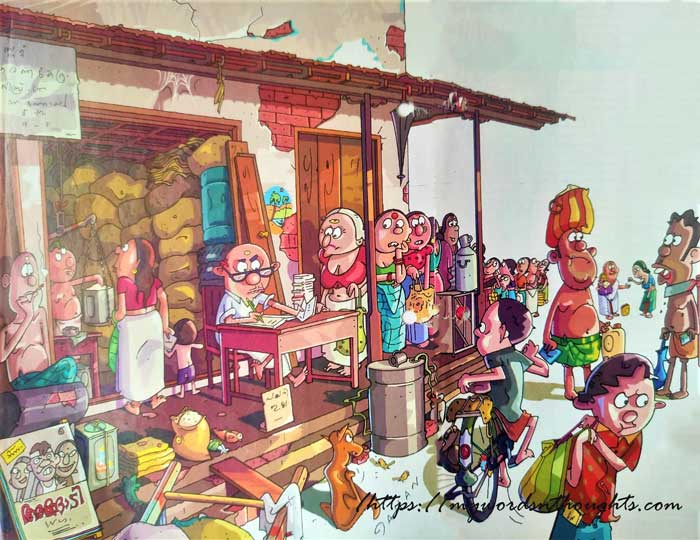
Those grieving journeys of kids to ration shops
Ration shops, known as ‘Ration Kada’ in Malayalam, was an integral part of average Malayalis, belonging to middle and lower classes. Housewives those days were most interested in getting news about ration shops. Troubling questions like, when will rice arrive? When will sugar and kerosene arrive? Mostly children were sent to ration shops for purchases, which they hated most. They also had to stand in long queues till they are served.
Ration shops were never built in posh areas, instead they always had a rural setup. Backside of old homes, single room shops filled with silence, dirty and untidy corners, walls without paint, roof with removed tiles, broken doors & windows, narrow spaces with less light, full of sacks and unpleasant smell – most ration shops of rural areas shared the same story. They make you remember the hideouts of dacoits and ghost houses of fantasy tales or old Malayalam films.
Only a very few shops had the board, ‘Ration shop’ or ‘fair price shops’ or ‘Public distribution system’. That also was too much decorative. In some places, it was written in old script on walls, with their house/shop number. In most ration shops, licensee’s name was displayed, and most kids never knew what it really means. Some kids assumed that that shop belongs to that person, simply he is the shop owner. There were a few more writings too, something similar to noticeboard to give message to ration card holders like Sugar over, Kerosene only 2 litre per card, wheat next week, raw rice over etc.
During those days when rural life was at its peak, such information used to spread like wild fire among homes in the native places, because many of the poor families solely lived on ration. It gave stress to housewives, and again passed to children & husbands. Moms keep disturbing their children to bring rice and kerosene from ration shops, not listening to their words. Most families have 1-2 small sacks for purchase from ration shops, and they also put ration card inside it, most times wrapped in plastic covers. There will be regular containers to carry kerosene too.
Mothers kept giving repetitive instructions like, never miss ration card, take care of money in pocket (mostly coins & 1 or 2 rupee notes), check things before you leave, ask them when wheat comes next week etc. Many times, kids will forget many of things asked by mothers. In return kids may get scolding though they walked a long distance, stood in queue, purchased things for home and carried to home. In short, ration shops have never been pleasant childhood memories to most kids.
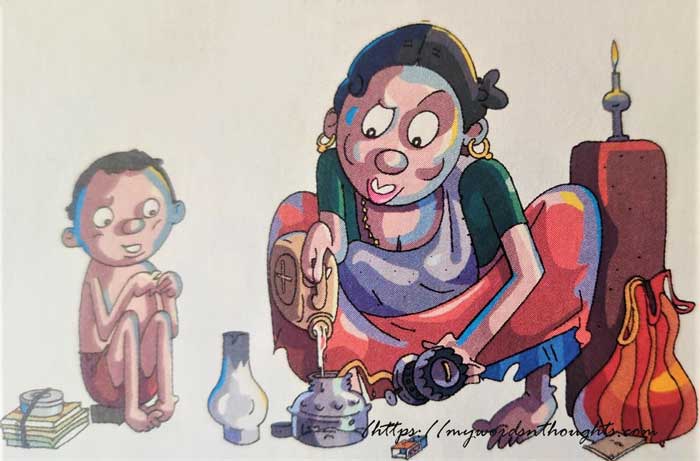
Many more reasons to hate ration shops
In most cases, ration shops will be at distance in countryside, and nothing to attract kids – candies, balloons, nothing. Also in most cases, while kids are playing after classes in evenings, their moms assign them the job to go to ration shops. Long queues also make them feel bored. And in some cases, crowded places, mostly in front of doors. Smell of kerosene and cereals also never attract kids, and they start staring at shopkeeper in boredom.
In most cases, the shopkeeper will be arrogant and boring person, with serious face holding pen in hand, writing something in ration cards full time. Occasionally he lifts his head to pulse the crowd and resume his job. His replies are short, sometimes a nod, and mostly carries serious attitude. Outside the ration shops, the local people will be busy telling rumours and stories, for time pass.
Almost every ration shop of 1980s and 1990s had same look. They also functioned exactly the same. Most of the shops appeared like centuries-old rooms with web cobs at corners. Most rooms had dark interiors with less light and were narrow, with less space. There will be a table with a pile of ration cards, and in the wooden chair sits the shopkeeper. Sacks of different sizes containing cereals and sugar, big containers filled with kerosene etc.
There will be one assistant to the shop owner too, who does everything what’s instructed. He can be the shopkeeper’s son or relative too. Using a machine, he transfers kerosene from big containers to users. If shopkeeper is the villain to kids of those days, his assistant is their hero. They communicate through different styles of glances than words. Based on their glances, quantity of kerosene and wheat received may also differ. Many factors influence this decision – quantity of stock, the relationship of customer with shop owner, luck, history of purchases, behaviour etc.
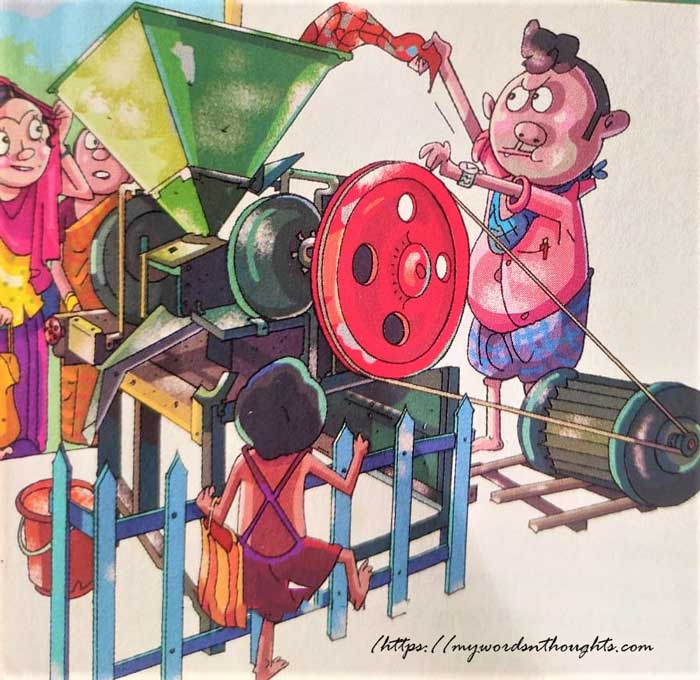
After a long queue, when children reach in front of shop owner, he may forget many of the tasks and questions assigned by mother. Mother might have instructed to get back the balance, put it back in pocket, not to forget ration card, check if carrying bag is ok etc. There were many kids who lost coins and even ration cards on their return journey.
If ration arrives in ration shops, kids were forced to go to shop first, before the stock ends, because ration used to be an integral part of rural areas. Mom may give ration card to kids while going to school, so that when they return they can carry heavy bags of ration rice and sugarcane.
A time of just two cards
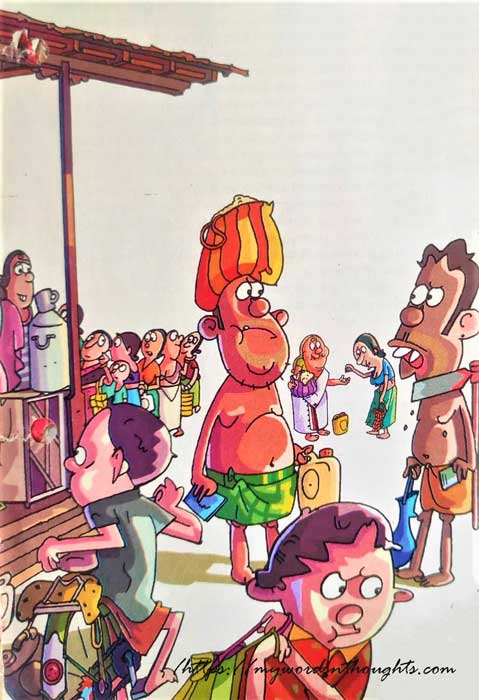
There was a time long back in the 1990s and before, where ATM, Adhar Card, Election Id etc didn’t come into existence. Progress card of school kids and ration cards were only familiar to Malayalis long back then. It was the only identity card proof of the whole family then. Like ornaments and land documents, ration cards were precious and could be pledged that time. Ration cards were not renewed those days. So, in most cases, age and income of kin will be comparatively less whenever we check cards. Only very few people displayed their annual income.
Like passport and visa, ration card and kerosene permit also formed a good combo. Without kerosene permit, you won’t get kerosene. In those days, electricity was not available in every home of rural areas, and hence kerosene was need to light lamps. Kerosene stoves were also very common. Kerosene was not available anywhere except from ration shops. In fact most ration cards carried the smell of kerosene.
Some smart children also find it as an excuse to buy bicycles for them. They complained about heavy rice bags and kerosene containers, and brainwashed parents that they will buy ration any time if gifted with bicycles. Thus many kids get bicycles when they reach high school. But the problem is when they carry all things together in cycle handles, kerosene may spill into rice or sugar from tins while travelling, and they may forget calculations too.
An average Malayali used to purchase everything, they got using cards. People consumed ration rice those days, though quality is low. People used to tease fat people asking, from where you get ration rice. Ration was so much important to Malayalis those days.
Problems of children never end with purchasing ration. They need to carry rice and wheat to flour mills too. In most cases, all these journeys are by foot. Problem doesn’t end here. They need to tell what’s the flour for – For steam cake or pathiri. If they had forgotten to ask from home, what to say more. In some regions, pathiri is replaced with queries like idiyappam, white appam etc. After completing their assigned tasks in the late evenings, kids will go to play.
For some teens it’s love ration
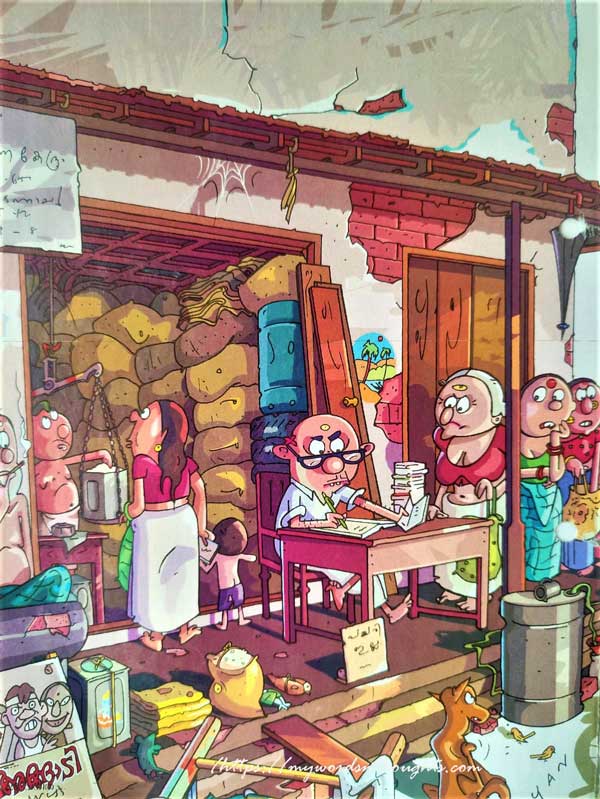
Some people have nostalgic ‘sugar’ sweet memories of ration shops too. In the evenings, teens may go and roam around ration shops, the place where girls come to buy ration. It’s the best place to see gathering of girls. Ration shop is the reserved space of women as well, where they share their problems with friends while standing in gathering or long queues.
Ration rice may be of very bad quality sometimes, turn very old with moths. Even after washing and rinsing with water many times, the fungus smell of rice and wheat may not go. Kids may stare at moms angry, while eating items made from such rice. Mom may act ignorant or helpless, because not many options those days.
Maveli stores which arrived in the 1980s
Apart from ration shops, maveli stories also formed an integral part of Kerala culture and rural life in the 1980s. The ‘glamour’ item of Maveli store was palm oil, which was not available in ration shops. Way back in the 1980s, after second shows at theatres, it was a common sight to see people in front of Maveli stores carrying ration cards. Next day, in many homes, delicious snacks used to be prepared using palm oil. Even those days, ration shops were also crowded, and stood like proud landlords.
Today people are divided into different classes, with ration cards marking as APL and BPL (Above Poverty Line & Below Poverty Line) and with different colours. Now the female member is given the first preference, unlike before. There was a time when except a small category, most people relied on ration shops for basic necessities. Now in the new era filled with super markets, shopping malls, margin free stores and hyper markets, ration shops are in wait of euthanasia. It’s foolish to think, we may return back to those ‘ration’ days, because along with time, everything has changed, our interests, spending capability and everything!
If you go back to nostalgic days and remember something unpleasant, but inevitable, definitely ration shops will be listed top.
Note: This article was done based on a feature published in Vanitha Magazine, 2017. To add, I have never ever visited a ration shop, not even once!! All the images used in this article, purely belong to the magazine and the artist.



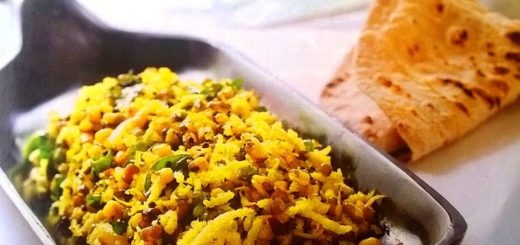










Recent Comments